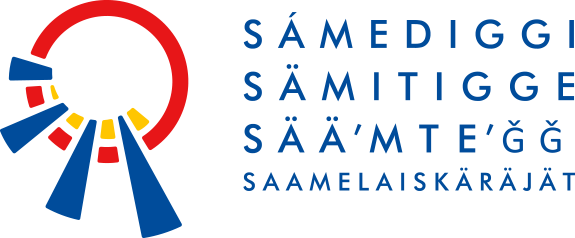What is a language nest?
On this page, you will find information about language nests and language immersion.
Language Nest
A language nest is an early, full immersion daycare programme intended for young children in the language of a language minority. It is a particular form of language immersion: it promotes bilingualism and multilingualism, and its aim is to revitalise an entire language and strengthen the culture that sustains it. A language nest is an early childhood education setting where children are spoken to exclusively in the target language from the very beginning, in all situations – even though they do not usually understand it at first. In Finland, when referring to a Sámi language nest, it generally means early childhood education intended for children from Sámi families, where a specific Sámi language is used from the start and the activities are based on Sámi culture.
Language Immersion
Language immersion is a pedagogical approach that is used worldwide, mainly in early childhood education and in schools. Its purpose is language learning through natural communication and activity. The language is not so much taught to children as used as the tool of interaction. Language immersion usually begins before school age, in early primary education. In this case it is referred to as early immersion. If it begins later in school education, it is called delayed or late immersion. Adult language learning can also make use of immersion methods. If the activities are conducted entirely in the immersion language, this is called full immersion. If other languages are also used, the immersion is partial. Language immersion programmes currently operate around the world in diverse language contexts. For example French immersion in Canada and Swedish immersion in Finland has gained extensive experience in language immersion.
Language Revitalisation
In Sámi language revitalisation, immersion methods have been applied for several decades. Not everywhere has the revitalisation activity been referred to as language immersion or a language nest. For example, the word “Sami nursery” has been used to describe situations where children are spoken to exclusively in Sámi, even if they do not yet understand it. The first documented case was the Lule Sámi nursery Vuonak sámemáná, which began operating in 1989 in the village of Drag / Ájluokta in the municipality of Tysfjord / Divtasvuodna, and continues to this day. In the 1990s, the concept of the language nest became familiar in several Sámi communities in Finland, when language nest activities began. Initially, these language nests were supported by various projects or grants (see the page “Sámi cultural and language nest activities in Finland”). Partial immersion in South Sámi began in 2000 in Norway, in the Svahken Sijte community in the municipality of Engerdal. Immersion has also been used in many other local Sámi language revitalisation projects.
The aim of a Sámi language nest is to transmit the Sámi language to children who do not learn it at home at all, or not sufficiently. A child may begin in a language nest at the age when early childhood education usually starts, earliest at nine months old. The starting age can depend on the family’s circumstances or on the practices of the group itself. The basic principle is that staff do not speak to the children in the majority language, which is usually the children’s home language. Children are free to choose which language they speak, but over time they are encouraged to use Sámi.
In a full immersion environment, a child who spends their days regularly in the language nest usually begins to understand the language very quickly. After a few months, the child develops passive basic language skills such as the ability to grasp the essential content of Sámi speech directed at them. Developing active language skills is slower and more individual, but typically children begin to repeat and use the words they hear most often within a few weeks or months. Some produce spontaneous speech in complete sentences in less than a year, while for others it may take several years. A few years in a language nest is usually enough to achieve functional bilingualism. Depending on educational arrangements, the child’s language skills, and parental choice, they may continue into Sámi, Finnish, or bilingual schooling.



